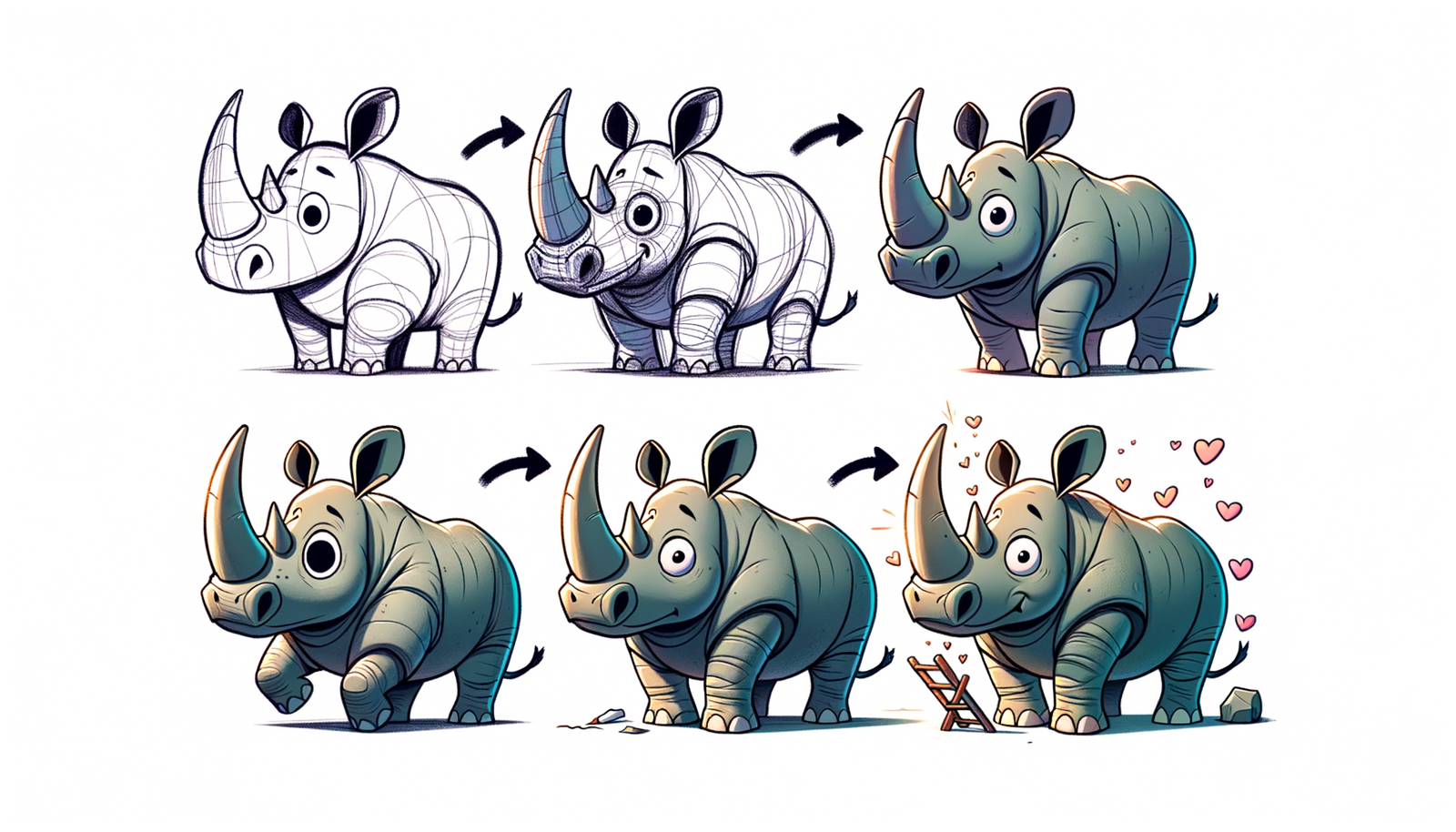Your Cart is Empty
Customer Testimonials
-
"Great customer service. The folks at Novedge were super helpful in navigating a somewhat complicated order including software upgrades and serial numbers in various stages of inactivity. They were friendly and helpful throughout the process.."
Ruben Ruckmark
"Quick & very helpful. We have been using Novedge for years and are very happy with their quick service when we need to make a purchase and excellent support resolving any issues."
Will Woodson
"Scott is the best. He reminds me about subscriptions dates, guides me in the correct direction for updates. He always responds promptly to me. He is literally the reason I continue to work with Novedge and will do so in the future."
Edward Mchugh
"Calvin Lok is “the man”. After my purchase of Sketchup 2021, he called me and provided step-by-step instructions to ease me through difficulties I was having with the setup of my new software."
Mike Borzage
Design Software History: The Journey of Rhino: From Visionary Beginnings to Industry-Shaping 3D Modeling Tool
August 27, 2024 5 min read


The Genesis of Rhino: Early Beginnings
Background and Initial Concept
The history of Rhino, a flagship software developed by Robert McNeel & Associates, is a fascinating journey that began in the early 1990s. The initial concept of Rhino was rooted in the need for a powerful yet user-friendly 3D modeling tool that could handle complex geometries. During this period, the landscape of design software was dominated by established names like AutoCAD and SolidWorks. However, these tools were often prohibitively expensive and restricted to users with substantial financial resources.
Robert McNeel, the founder of Robert McNeel & Associates, envisioned a different path. The goal was to create an affordable, versatile, and robust modeling tool that could cater to a broad audience, including architects, industrial designers, and artists. This vision led to the birth of Rhino, a software that would soon revolutionize the world of 3D modeling.
Key People and Inspirations
At the heart of Rhino's development were key figures like Robert McNeel and Mike Payne. Robert McNeel's leadership and vision were instrumental in steering the project towards its goal. Mike Payne, a seasoned developer with extensive experience in geometric modeling, played a crucial role in shaping Rhino's core technologies.
The initial goals for Rhino were ambitious. The team aimed to create a tool that would leverage the power of NURBS (Non-Uniform Rational B-Splines) modeling, a mathematical representation of 3D geometry that offers great flexibility and precision. This focus on NURBS was inspired by the limitations of polygonal modeling techniques, which struggled to accurately represent complex surfaces.
Development Milestones: From Prototyping to Mainstream
Early Versions and Features
The journey from concept to mainstream acceptance was marked by several key milestones. Rhino 1.0, released in 1998, was the first major step towards realizing the team's vision. This initial version introduced users to the power and versatility of NURBS modeling, setting Rhino apart from other design tools of the time.
- Release of Rhino 1.0 (1998)
- Introduction of NURBS modeling
The release of Rhino 1.0 garnered significant attention within the design community. The software's ability to handle complex geometries with ease made it an attractive option for professionals in various fields, from architecture to industrial design.
Evolution through Major Releases
As Rhino gained traction, the development team continued to enhance and expand its capabilities through subsequent releases. Rhino 2.0 and 3.0 saw significant improvements in functionality and user interface, making the software even more accessible and powerful.
With the release of Rhino 4.0 and 5.0, the focus shifted towards improving rendering capabilities and ensuring compatibility with other design tools. These updates allowed users to create highly detailed and visually stunning models, further cementing Rhino's reputation as a leading 3D modeling tool.
- Rhino 2.0 to Rhino 3.0: Enhanced functionalities and user interface
- Rhino 4.0 to Rhino 5.0: Improved rendering and compatibility with other tools
The introduction of Rhino 6.0 marked another significant milestone. This release integrated Grasshopper, a powerful visual programming language for computational design. This integration opened up new possibilities for users, allowing them to create complex parametric models and automate design processes.
- Rhino 6.0 and beyond: Integration of Grasshopper and advanced computational design features
Technological Innovations and Industry Impact
Core Technologies and Algorithms
The success of Rhino can be attributed to its core technologies and robust algorithms. At the heart of Rhino's modeling capabilities is the use of NURBS, which offers several advantages over traditional polygonal modeling techniques. NURBS allows for the creation of smooth, continuous surfaces that can accurately represent complex geometries.
In addition to NURBS modeling, Rhino's development team focused on creating robust algorithms for surface modeling. These algorithms enable users to perform complex operations with ease, such as trimming, blending, and filleting surfaces.
Application Across Industries
Rhino's versatility has made it a valuable tool across various industries. In architectural design, Rhino has been used to create landmark projects, pushing the boundaries of what is possible in terms of form and structure. The software's ability to handle complex geometries has made it a favorite among architects and designers.
In industrial design and manufacturing, Rhino has been adopted by leading companies in the automotive, aerospace, and jewelry industries. Its precision and flexibility make it an ideal tool for creating intricate designs and prototypes.
- Architectural design: Case studies of landmark projects
- Industrial design and manufacturing: Adoption in automotive, aerospace, and jewelry design
Rhino has also made significant contributions to academic and research fields. Universities and research institutions around the world use Rhino to teach and explore advanced design concepts, fostering innovation and creativity.
- Academic and research use: Contributions to education and innovation
The Rhino Ecosystem: Community, Plugins, and Future Directions
Community and Ecosystem
One of the key factors behind Rhino's success is its vibrant user community. The Rhino community is a diverse group of professionals, educators, and enthusiasts who actively contribute to the software's development and growth. Online forums and user groups provide a platform for users to share knowledge, collaborate on projects, and offer feedback to the development team.
In addition to the core software, Rhino's ecosystem includes a wide range of third-party plugins that extend its capabilities. Plugins like Grasshopper, V-Ray, and others have become essential tools for many users, adding powerful functionalities and enabling new workflows.
- Contributions of the Rhino user community and forums
- Development and impact of third-party plugins (e.g., Grasshopper, V-Ray, etc.)
Future Prospects and Challenges
As Rhino continues to evolve, the development team remains focused on delivering new features and innovations. The upcoming release of Rhino 7.0 promises to introduce even more advanced tools and functionalities, further solidifying Rhino's position as an industry leader.
However, maintaining industry leadership comes with its own set of challenges. The rapid pace of technological advancements and the emergence of new design paradigms require continuous adaptation and innovation. The Rhino team must address these challenges to ensure the software remains relevant and valuable to its users.
Reflections and Legacy
Reflecting on Rhino's journey, it is clear that the software has played a significant role in shaping modern design workflows. From architecture to industrial design, Rhino's impact can be seen in countless projects and innovations.
Testimonials and reflections from industry experts and users highlight the transformative power of Rhino. The software has not only enabled new possibilities in design but also fostered a global community of creative professionals who continue to push the boundaries of what is possible.
- Rhino's role in shaping modern design workflows
- Testimonials and reflections from industry experts and users
In conclusion, the history of Rhino is a testament to the power of vision, innovation, and community. From its early beginnings to its current status as an industry standard, Rhino has revolutionized the world of 3D modeling and continues to inspire designers and creators around the globe.
Also in Design News

Cinema 4D Tip: Matrix-Driven Instancing for High-Performance Scattering
December 20, 2025 2 min read
Read More
V-Ray Tip: V-Ray Anisotropy Techniques for Brushed Metals and Hair
December 20, 2025 2 min read
Read MoreSubscribe
Sign up to get the latest on sales, new releases and more …



